-
 Bitcoin
Bitcoin $106,754.6083
1.33% -
 Ethereum
Ethereum $2,625.8249
3.80% -
 Tether USDt
Tether USDt $1.0001
-0.03% -
 XRP
XRP $2.1891
1.67% -
 BNB
BNB $654.5220
0.66% -
 Solana
Solana $156.9428
7.28% -
 USDC
USDC $0.9998
0.00% -
 Dogecoin
Dogecoin $0.1780
1.14% -
 TRON
TRON $0.2706
-0.16% -
 Cardano
Cardano $0.6470
2.77% -
 Hyperliquid
Hyperliquid $44.6467
10.24% -
 Sui
Sui $3.1128
3.86% -
 Bitcoin Cash
Bitcoin Cash $455.7646
3.00% -
 Chainlink
Chainlink $13.6858
4.08% -
 UNUS SED LEO
UNUS SED LEO $9.2682
0.21% -
 Avalanche
Avalanche $19.7433
3.79% -
 Stellar
Stellar $0.2616
1.64% -
 Toncoin
Toncoin $3.0222
2.19% -
 Shiba Inu
Shiba Inu $0.0...01220
1.49% -
 Hedera
Hedera $0.1580
2.75% -
 Litecoin
Litecoin $87.4964
2.29% -
 Polkadot
Polkadot $3.8958
3.05% -
 Ethena USDe
Ethena USDe $1.0000
-0.04% -
 Monero
Monero $317.2263
0.26% -
 Bitget Token
Bitget Token $4.5985
1.68% -
 Dai
Dai $0.9999
0.00% -
 Pepe
Pepe $0.0...01140
2.44% -
 Uniswap
Uniswap $7.6065
5.29% -
 Pi
Pi $0.6042
-2.00% -
 Aave
Aave $289.6343
6.02%
Is it a real breakthrough if there is no volume before the breakthrough?
A breakout in crypto trading is more reliable when accompanied by high volume, indicating strong market conviction and increasing the likelihood of sustained price movement in the breakout direction.
Jun 17, 2025 at 08:03 am
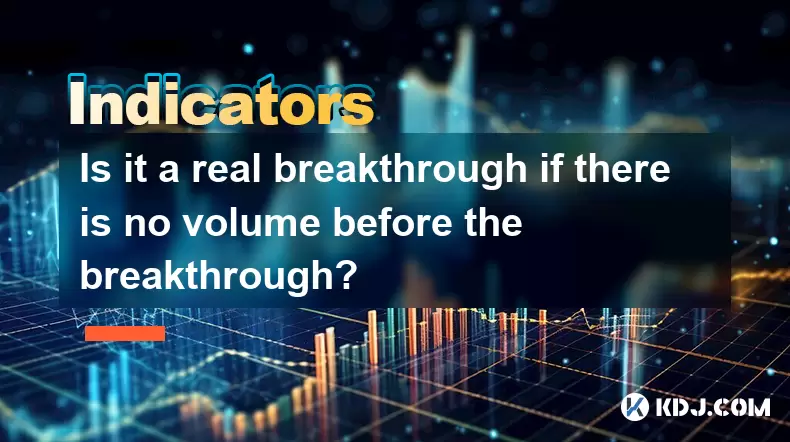
Understanding the Concept of a Breakthrough in Cryptocurrency Trading
In cryptocurrency trading, a breakthrough typically refers to a price movement that surpasses a key resistance or support level. Traders often look for such events as potential signals for trend continuation or reversal. However, a crucial factor that determines the strength and reliability of a breakthrough is volume. Volume represents the number of transactions executed during a specific period and acts as a confirmation tool for price movements.
When there is a breakout without significant volume, it raises questions about its authenticity. A genuine breakout usually sees an increase in volume because it indicates strong market participation and conviction behind the move. Without this, traders may question whether the price action is sustainable or merely a false signal.
The Role of Volume in Confirming Breakouts
Volume plays a critical role in validating any technical analysis signal, especially breakouts. In traditional markets and also within crypto markets, a breakout accompanied by high volume suggests that institutional players or large traders are entering the market. This increases the likelihood that the price will continue moving in the breakout direction.
Conversely, if a cryptocurrency breaks out of a consolidation zone but does so on low volume, it could indicate a lack of interest or even manipulation. In many cases, low-volume breakouts can lead to sharp reversals shortly after, trapping retail traders who entered positions based solely on price action.
It's important to note that volume should not be viewed in isolation. It must be analyzed alongside other indicators like moving averages, RSI, or MACD to form a more complete picture of market sentiment.
Why Low-Volume Breakouts Can Be Misleading
Low-volume breakouts are often misleading because they do not reflect true demand or supply shifts. In the crypto space, where liquidity varies significantly across different assets, a small amount of buying pressure can sometimes push the price past a resistance level temporarily.
This kind of scenario is particularly common in lower-cap altcoins, where thin order books allow whales or bots to manipulate price easily. When such artificial breakouts occur, they may trigger automated trading systems or stop-loss orders, further amplifying the move temporarily.
Traders relying solely on chart patterns without considering volume may end up entering trades at unfavorable points. Hence, understanding the context of volume around a breakout is essential for risk management and trade validation.
How to Analyze Volume in Crypto Breakouts
To effectively assess whether a breakout has real momentum, traders should follow these steps:
- Compare current volume with average volume: If the volume during the breakout is significantly higher than the 10- or 20-period average volume, it adds credibility to the move.
- Use volume-based indicators: Tools like On-Balance Volume (OBV) or Volume Weighted Average Price (VWAP) can help determine whether buying or selling pressure is building.
- Check volume across multiple timeframes: A breakout on the 4-hour chart might not be confirmed on the daily chart. Cross-checking helps avoid false positives.
- Look for divergence between price and volume: If the price is rising but volume is decreasing, it may suggest weakening momentum.
- Observe how price reacts after the breakout: If the price holds above the broken level and continues to rise with sustained volume, the breakout is likely valid.
By incorporating these checks into their analysis, traders can filter out weak or fake breakouts and focus on high-probability opportunities.
Real Breakthrough vs. Fakeout: Spotting the Difference
Differentiating between a real breakout and a fakeout requires attention to detail and patience. A real breakout tends to show signs of continued strength after breaking a key level. This includes retesting the level as new support (in case of an upward breakout) and maintaining the new price territory.
A fakeout, on the other hand, typically shows weakness shortly after the initial breakout. The price may quickly reverse and close below the previously broken level. Fakeouts are often used by market makers or large players to trap traders into bad positions.
Some red flags that suggest a breakout might be a fake include:
- No increase in volume during the breakout
- Sharp, quick moves followed by immediate pullbacks
- Lack of follow-through in the next few candlesticks
- Breakout occurs during low liquidity periods (e.g., late-night hours)
Identifying these characteristics early can help traders avoid costly mistakes.
FAQs
What tools can I use to measure volume in crypto trading?
You can use platforms like Binance, TradingView, or CoinMarketCap that display volume data directly on the chart. Indicators like OBV, VWAP, and volume histograms are commonly used to analyze volume trends.
Can a breakout still be valid even if volume doesn’t spike immediately?
Yes, in some cases, volume builds gradually after the breakout rather than before. If the price maintains the new level and volume picks up afterward, it can still be considered a valid breakout.
Are all high-volume breakouts reliable?
Not necessarily. High volume alone doesn't guarantee a successful breakout. It needs to align with other factors such as trend direction, previous support/resistance levels, and broader market conditions.
Is it possible for a breakout to happen due to news rather than organic volume?
Absolutely. Market-moving news can cause sudden spikes in price even without prior volume buildup. In such cases, the breakout may be driven by sentiment or fundamental changes rather than technical accumulation.
Disclaimer:info@kdj.com
The information provided is not trading advice. kdj.com does not assume any responsibility for any investments made based on the information provided in this article. Cryptocurrencies are highly volatile and it is highly recommended that you invest with caution after thorough research!
If you believe that the content used on this website infringes your copyright, please contact us immediately (info@kdj.com) and we will delete it promptly.
- 2025-W Uncirculated American Gold Eagle and Dr. Vera Rubin Quarter Mark New Products
- 2025-06-13 06:25:13
- Ruvi AI (RVU) Leverages Blockchain and Artificial Intelligence to Disrupt Marketing, Entertainment, and Finance
- 2025-06-13 07:05:12
- H100 Group AB Raises 101 Million SEK (Approximately $10.6 Million) to Bolster Bitcoin Reserves
- 2025-06-13 06:25:13
- Galaxy Digital CEO Mike Novogratz Says Bitcoin Will Replace Gold and Go to $1,000,000
- 2025-06-13 06:45:13
- Trust Wallet Token (TWT) Price Drops 5.7% as RWA Integration Plans Ignite Excitement
- 2025-06-13 06:45:13
- Ethereum (ETH) Is in the Second Phase of a Three-Stage Market Cycle
- 2025-06-13 07:25:13
Related knowledge
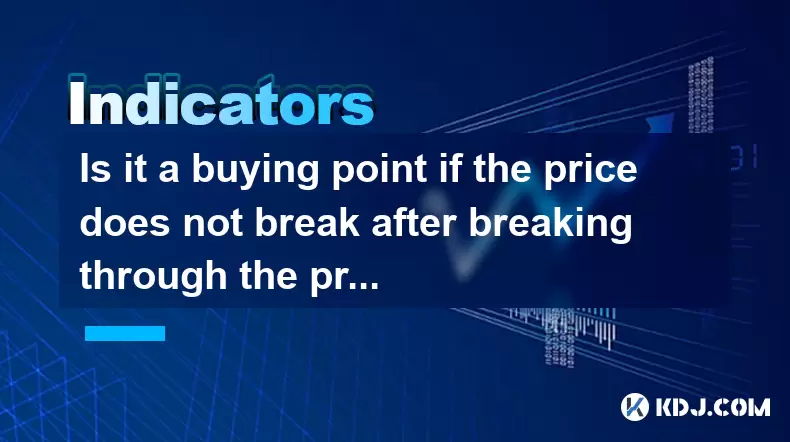
Is it a buying point if the price does not break after breaking through the previous high? How to confirm?
Jun 17,2025 at 01:22pm
Understanding Price Behavior After Breaking Previous HighsWhen analyzing cryptocurrency price charts, traders often look for breakouts as potential signals for new trends. A common question among traders is whether a non-breakdown after breaking through a previous high indicates a buying opportunity. To answer this, it's essential to understand the psyc...
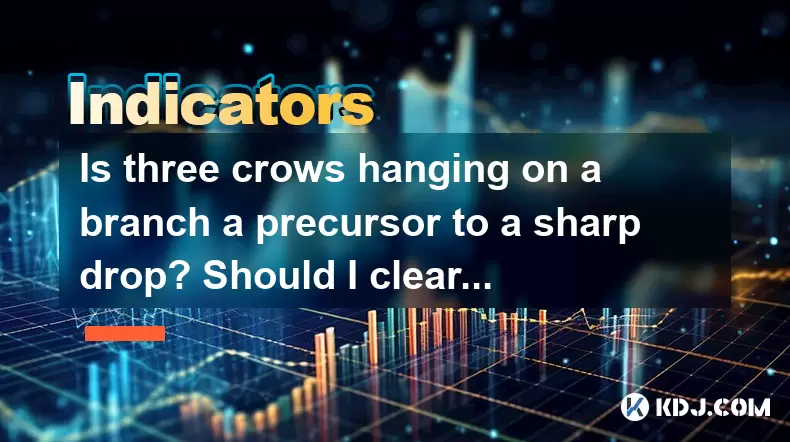
Is three crows hanging on a branch a precursor to a sharp drop? Should I clear my position?
Jun 17,2025 at 12:50pm
What Does 'Three Crows Hanging on a Branch' Mean in Crypto Trading?In technical analysis, the 'three crows hanging on a branch' is a candlestick pattern that often signals a potential reversal from an uptrend to a downtrend. This pattern typically appears after a period of rising prices and consists of three consecutive bearish (red) candles with progre...
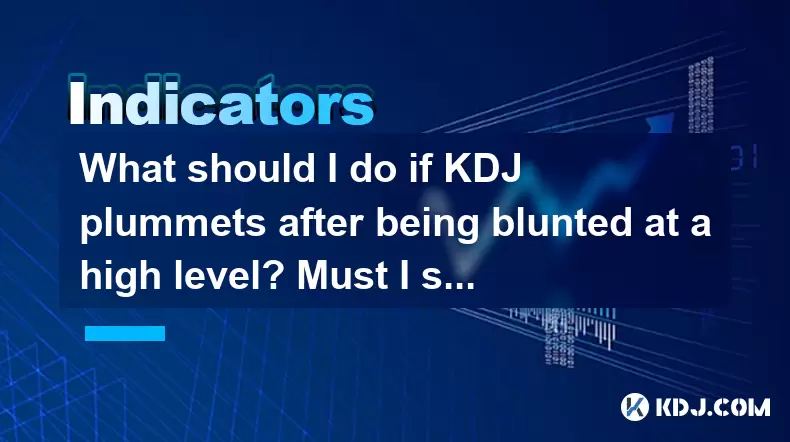
What should I do if KDJ plummets after being blunted at a high level? Must I stop loss?
Jun 17,2025 at 12:01pm
Understanding KDJ Indicator Dynamics in Cryptocurrency TradingThe KDJ indicator, also known as the stochastic oscillator, is a momentum-based tool used to identify overbought and oversold conditions in financial markets, including cryptocurrency. It consists of three lines: the %K line (fast stochastic), the %D line (slow stochastic), and the %J line (d...
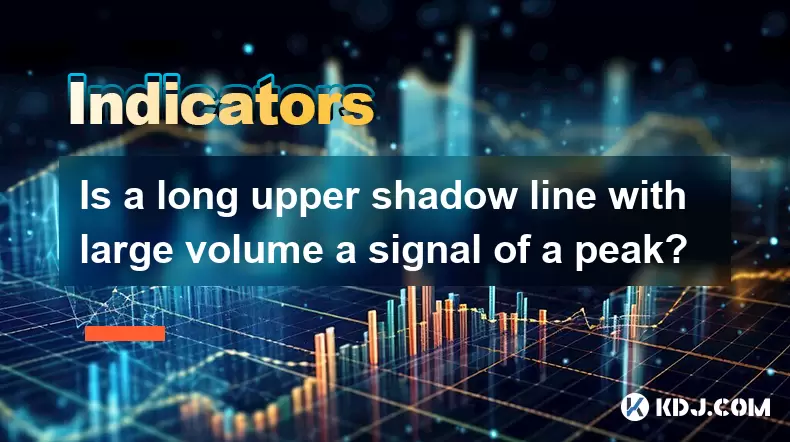
Is a long upper shadow line with large volume a signal of a peak?
Jun 17,2025 at 05:07am
Understanding the Long Upper Shadow LineA long upper shadow line, often referred to as a shooting star or inverted hammer depending on its location in a chart, is a candlestick pattern that indicates potential reversal from an uptrend. This pattern forms when prices rise significantly during the trading period but then fall back to close near the openin...
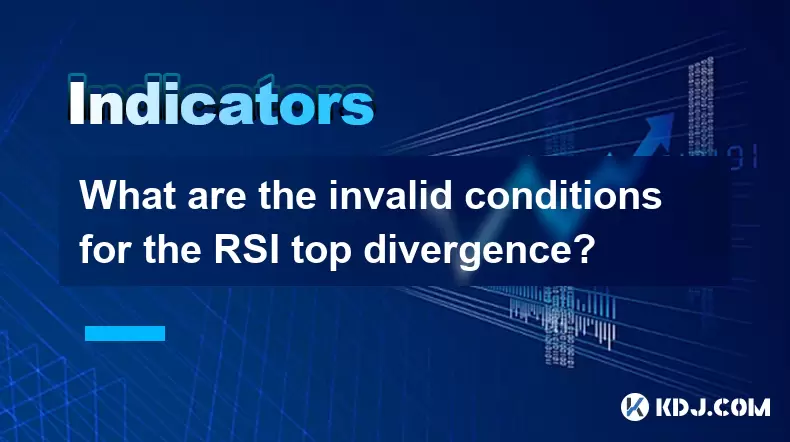
What are the invalid conditions for the RSI top divergence?
Jun 17,2025 at 01:35pm
Understanding RSI Top DivergenceThe Relative Strength Index (RSI) is a momentum oscillator used to identify overbought or oversold conditions in financial markets, including cryptocurrency trading. A top divergence occurs when the price of an asset makes a higher high, but the RSI fails to confirm this move and instead records a lower high. This conditi...
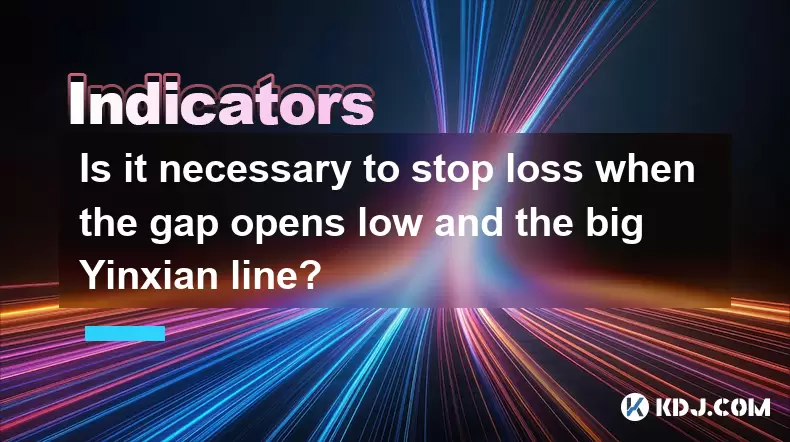
Is it necessary to stop loss when the gap opens low and the big Yinxian line?
Jun 17,2025 at 01:07pm
Understanding the Concept of Gaps in Cryptocurrency TradingIn cryptocurrency trading, gaps refer to areas on a price chart where no trading activity has occurred. These usually appear between the closing price of one candlestick and the opening price of the next. In traditional markets, gaps often occur due to news or events that happen outside regular ...

Is it a buying point if the price does not break after breaking through the previous high? How to confirm?
Jun 17,2025 at 01:22pm
Understanding Price Behavior After Breaking Previous HighsWhen analyzing cryptocurrency price charts, traders often look for breakouts as potential signals for new trends. A common question among traders is whether a non-breakdown after breaking through a previous high indicates a buying opportunity. To answer this, it's essential to understand the psyc...

Is three crows hanging on a branch a precursor to a sharp drop? Should I clear my position?
Jun 17,2025 at 12:50pm
What Does 'Three Crows Hanging on a Branch' Mean in Crypto Trading?In technical analysis, the 'three crows hanging on a branch' is a candlestick pattern that often signals a potential reversal from an uptrend to a downtrend. This pattern typically appears after a period of rising prices and consists of three consecutive bearish (red) candles with progre...

What should I do if KDJ plummets after being blunted at a high level? Must I stop loss?
Jun 17,2025 at 12:01pm
Understanding KDJ Indicator Dynamics in Cryptocurrency TradingThe KDJ indicator, also known as the stochastic oscillator, is a momentum-based tool used to identify overbought and oversold conditions in financial markets, including cryptocurrency. It consists of three lines: the %K line (fast stochastic), the %D line (slow stochastic), and the %J line (d...

Is a long upper shadow line with large volume a signal of a peak?
Jun 17,2025 at 05:07am
Understanding the Long Upper Shadow LineA long upper shadow line, often referred to as a shooting star or inverted hammer depending on its location in a chart, is a candlestick pattern that indicates potential reversal from an uptrend. This pattern forms when prices rise significantly during the trading period but then fall back to close near the openin...

What are the invalid conditions for the RSI top divergence?
Jun 17,2025 at 01:35pm
Understanding RSI Top DivergenceThe Relative Strength Index (RSI) is a momentum oscillator used to identify overbought or oversold conditions in financial markets, including cryptocurrency trading. A top divergence occurs when the price of an asset makes a higher high, but the RSI fails to confirm this move and instead records a lower high. This conditi...

Is it necessary to stop loss when the gap opens low and the big Yinxian line?
Jun 17,2025 at 01:07pm
Understanding the Concept of Gaps in Cryptocurrency TradingIn cryptocurrency trading, gaps refer to areas on a price chart where no trading activity has occurred. These usually appear between the closing price of one candlestick and the opening price of the next. In traditional markets, gaps often occur due to news or events that happen outside regular ...
See all articles

























































































